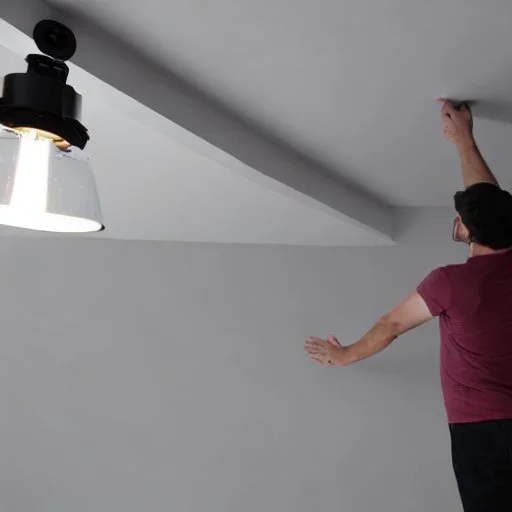July 19, 2025

Installing ceiling lights is a pretty straightforward task that most homeowners and DIY enthusiasts can do. However, it's important to have the right tools and know-how to ensure that the installation is done safely and correctly.
This article will give you some tips on how to properly install ceiling lights, from gathering the necessary tools to testing the fixture after it's mounted. By following these steps, you'll be able to finish your project quickly and efficiently while still adhering to safety and electrical codes.
Gathering the necessary tools makes it possible to properly install ceiling lights. It is important to choose the appropriate tools for this job, as they will help ensure that everything is installed correctly and safely. One must take into account the size of the ceiling light being installed when choosing tools, as well as determine where the placement of the light should be. It is essential to have a drill, screws, wall anchors and an electrician's pliers on hand before beginning installation in order to make sure that all components are securely attached and wired properly. Furthermore, it is also beneficial to have a ladder or step stool handy in order to reach higher ceilings with ease. Taking these steps will help guarantee a safe and successful installation process.
Prior to continuing with the installation of a ceiling light, it is essential to first ensure that the power is turned off. This can be accomplished by either turning off the circuit breaker in the home's main electrical panel or by unplugging any existing fixtures.
Additionally, when selecting bulbs for replacement, it is important to select one that matches the wattage and voltage of the original bulb. If not done correctly, this can create an unsafe environment as well as potentially damaging your fixture.
Installing switches should also be considered if needed to control lighting in specific areas of a room or hallway. Switches come in different sizes and shapes which allow you to customise them according to your needs and preferences.
Furthermore, when working with an electrician on this project, they will be able to provide advice on correct switch selection and installation.
Once the power has been turned off, the next step in installing a ceiling light is to install the junction box. The first step of this process involves selecting a junction box that is suitable for the weight of the chosen fixtures and securing it within the ceiling. It is important to make sure that all screws are tightened securely so that there will be no movement once the wires have been connected.
Once it is secure, wiring can begin by connecting both incoming and outgoing cables from the junction box. Care must be taken when installing wires as they should not be bent or kinked as this may affect their performance and could lead to failure of equipment or even fire hazards.
When all wiring has been completed, make sure to use plastic caps on any unused terminals to protect them from dust and moisture. This will help ensure safe operation of your new lighting fixtures.
Connecting the wiring is a critical step in installing a ceiling light. It is important to observe safety precautions when handling electrical wires, as they can be potentially hazardous if not handled with care.
The connecting process begins by connecting the black and white wires coming from the ceiling to their corresponding terminals on the junction box, which are usually marked with 'L'(black wire) and 'N'(white wire). After adjusting the length of these two wires, it is necessary to connect them together using an appropriately sized wire nut. Finally, secure all connections by wrapping electrical tape around each one.
When all connections have been made securely, double-check that none of them are loose or disconnected before turning on electricity supply to the fixture.
Mounting the light and testing the connections is the final step in the installation process. When installing lights, it is important to use safety precautions and follow manufacturer instructions to ensure a proper fit.
The mounting bracket must be securely attached to an electrical box that is firmly connected to a joist or rafter. The light should then be installed according to the manufacturer's directions, making sure all screws are tightened properly.
Once mounted, check that all wiring connections have been completed correctly, including any wall switches if applicable. Lastly, switch on power at the circuit breaker panel and test your new lights for proper operation before replacing any faceplates or trim pieces that were removed during installation.
By taking these steps when installing ceiling lights, you can help ensure a safe and successful installation process.
The installation of a ceiling light can be done with the right tools and knowledge. It's important to turn off the power before starting any work to ensure safety. The junction box should be securely installed before wiring is connected. Once everything is in place, the fixture should be mounted and tested for proper functioning. By following these steps carefully, you can expect to have a functional ceiling light that adds illumination and style to your home. To conclude, installing a ceiling light requires attention to detail and careful consideration of safety guidelines. Taking the time to gather the right tools and following each step properly will result in a successful installation that creates an inviting atmosphere in any room.